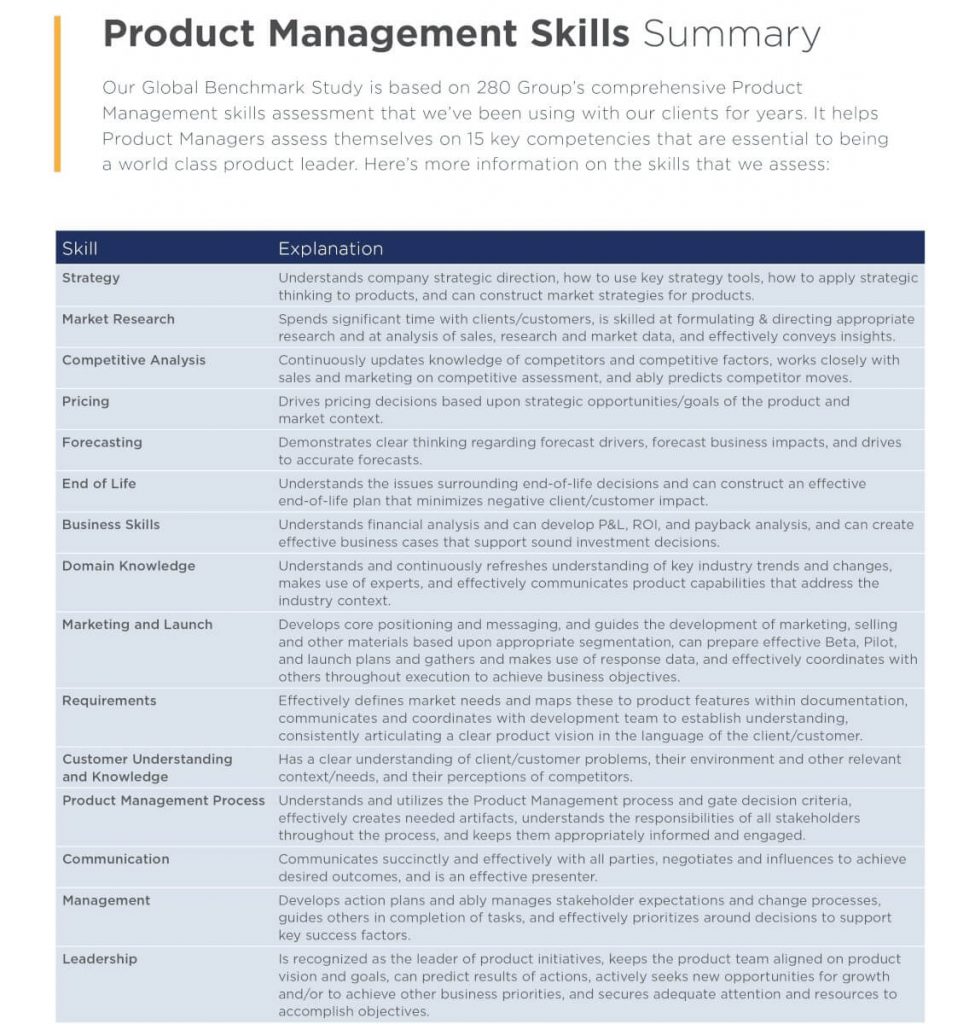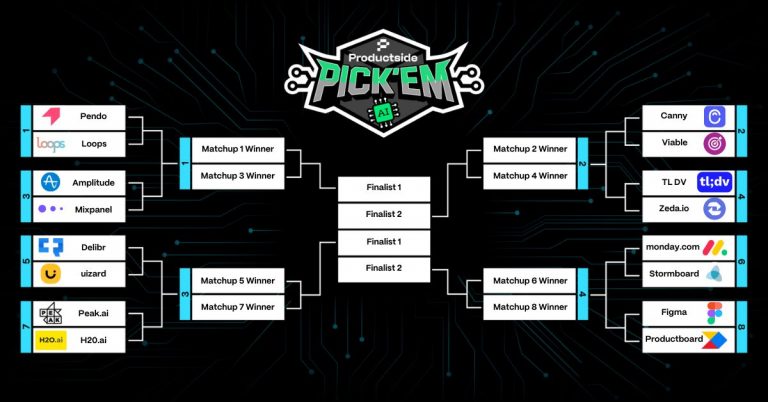
Product leaders in need of extraordinary talent rarely find themselves in a position where they are afforded ample time to recruit, evaluate, hire, and ramp-up a new Product Manager. The whole process takes significant time and energy to bring in new talent to a point where they are adding significant value to the team.
For the fortunate 20% that feel they have highly effective programs to find and retain the best talent, hiring great Product Managers still takes time, with averages ranging from 30 to 45 days. For the other 80% of us, it’s a barrage of headwinds slowing us down while we seek that ultimate combo of skills, experience, and alignment while fending off competitive offers. Then comes the ramp-up effort, imparting the unique institutional knowledge new PMs need to start influencing in your company faster.
Hiring the right PM is one of the most important tasks of a product leader because it can have implications on the strength and capabilities of the team for years to come. You want to do it right, but you also want to fill the position as quickly as possible. Then once they are on board, you want them to add value as soon as possible. Every additional week that a new PM is not adding value represents a significant cost considering the average PM compensation of $1856/week.
The Product Management Hiring Process
If you are looking to speed up your recruiting cycle and ensure your new Product Manager performs faster, consider this process:
- Leverage resources for a fast start
- Get alignment on hiring goals
- Develop a crisp, clear job description
- Speed up candidate sourcing
- Build a hiring team for faster results
- Build an onboarding and education process for speed
#1: Getting Off to a Fast Start
One of the hardest parts of hiring a new team member is getting started. Typically, the biggest barrier is being clear on what you really need to advance your team, then writing the right job description to hire the right person to fill those needs.
Following the steps above will set you on the right path. Having our handy resources for job descriptions, skills, interview questions, and etc., will give you the tools to move quickly through these steps.
Over the years, you have honed your Product Management superpowers, establishing a product management process for your team, conducting user/buyer research, creating OKRs and KPIs to track success, prioritizing tasks, and influencing decision-makers to move projects forward at lightning speed. This should give you the confidence you need to drive the process with confidence.
You got this! ?
#2: Get Alignment on Hiring Goals
As Stephen Covey wisely said, “Begin with the End in Mind.” For you, this means establishing clear goals on what new value and capabilities this new hire should bring, and/or what existing problems they will solve. Since Product Managers must work well cross-functionally, you also need to get alignment cross-functionally for the best hires and faster onboarding. Here are some tips:
- Establish Clear Goals: Write down the three things you expect this new hire will do for the organization, whether it be solving existing problems, or adding new capabilities to the team.
- Build Stakeholder Alignment: Avoid iterations by engaging with stakeholders early on around requirements and timelines. Committees and Panels (more below) are a great resource to speed up the process and ensure alignment.
- Measure Candidate Culture & Values Alignment: Skills can be trained, but culture and values alignment is trickier. By breaking these down and weighting them in your matrix to be shared with interviewers, your final debrief will have data-driven information to measure alignment.
- Measure Candidate Alignment to your Methodology: With the right questions, you can immediately evaluate how candidates align with your company’s product processes.
By following these tips, misalignments can be weeded out earlier, while good fits progress to the next steps faster. By finding candidates that have strong alignment, you are also giving your eventual new hire a measurable head start when it comes to navigating their first weeks.
#3: Develop a Crisp, Clear Job Description
As you’re developing your job description, based on the tips above, you should also consider these questions:
- Do we need a Customer Advocate, Data-Guru, Growth Hacker, or a Jack-of-all-trades? How do we value product ownership vs product management strengths? Do we need a strategic leader or a technical task master? Get alignment early here to move faster.
- How important is formal Product Management education and certification? If an MBA is a must, save time by focusing on Universities with great PM programs (e.g., Kellogg or CMU). If you are looking for candidates with specific certifications, the Association of International Product Marketing & Management (AIPMM) is a great resource as the world’s largest professional association for Product Management.
- What skills are most important? Be sure to consider both the foundational hard skills like market-research and the interpersonal soft skills like influence and leadership. Leverage our recent blog where we review the 15 vital Product Management skills from our benchmark report, plus consider adding a skills assessment into your hiring process.

Most PMs also need to be able to influence leadership, stakeholders, and teams without authority—so include this in your job description. Get a head start on your question preparation with great interview questions like “Tell me about the last time you said ‘No,’” or “Share a story on how you convinced leadership.”
#4: Speed Up Candidate Sourcing
Avoid costly slowdowns by proactively identifying a diverse set of sourcing options. Here are some ideas:
- In addition to external candidates, have a process for evaluating internal candidates who have the added potential benefit of faster onboarding.
- Are there candidates from past interviews that were great fits but just missed out? Re-interviewing these candidates is a terrific way to leapfrog initial recruiting steps to speed up.
- With 2020 increasing adoption of remote teams, widen your net with candidates across the country. If you are in a market like San Francisco, this may allow you to save on salary or free up budget to court that dream candidate.
- Go Multi-channel. Online PM groups, local networks, team referrals help unearth talent not visible to your HR team or recruiting partner.
- If you need a boost and do not want to waste time explaining title/role intricacies to recruiting agencies, start with recruiting services specialized in Product Management.
#5: Speed Up Interviewing with Committees and Panels
Interview committees have become standard in Product Management recruitment with practitioners seeing benefits around diversity, stakeholder alignment, interviewing accuracy (up to 30%) and less interview bias but they can also help speed up the process.
With many panel types to choose from, each organization will have its own differences based on their process and role requirements. To set up your committee for speed:
- Create and share a document that lists out the role description, candidate resumes/portfolios, interview goals, interview questions and topics, and timelines for each stakeholder—or, use an HR system that does this for you.
- Speed up collaboration and avoid repetition by building a shared decision grid/matrix to share information gathered from one interviewer to the next.
- With average PM candidates receiving 2-5 offers, panels are not just for evaluation, they also help distribute the “selling side” of why a great candidate should choose your organization—setting you up for faster offer acceptance.
- Leverage your project management skills to accelerate the process by prepping interviewers, keeping stakeholders on task, and scheduling a debrief at the end to find consensus.
#6: Build an Onboarding and Education Process for Speed
Unfortunately, even if you save a couple of weeks on the journey to starting a new Product Manager, ramping them up to a point where they are adding value and exerting influence can take months, if not longer.
One product leader shared his strategy of giving new Product Managers the organizational chart but then having them build their own version detailing the actual “decision-making lay-of-the-land” as they made their introductory rounds. His Product Managers were able to exert influence faster with this insider-knowledge.
Setting Up Your New Hires for Success
In the end, ramping up to value-add will take time. Hours of product immersion, process adoption, team meetings, and investment in individual relationships must be made before ROI is achieved.
To accelerate this process, clients like Kimberly-Clark and Optum choose to expedite their new hire ramp-up by investing in 280 Group’s Optimal Product Management course for their new hires or by aligning the entire product team together in a customized Product Management training workshop to ensure they build better products together faster.
Remember the average weekly PM salary cost mentioned earlier? If your new PM ramps up just two weeks faster, then the investment in professional training will yield a very positive return. Schedule a call with our team if you need to ramp up new team members quickly.

